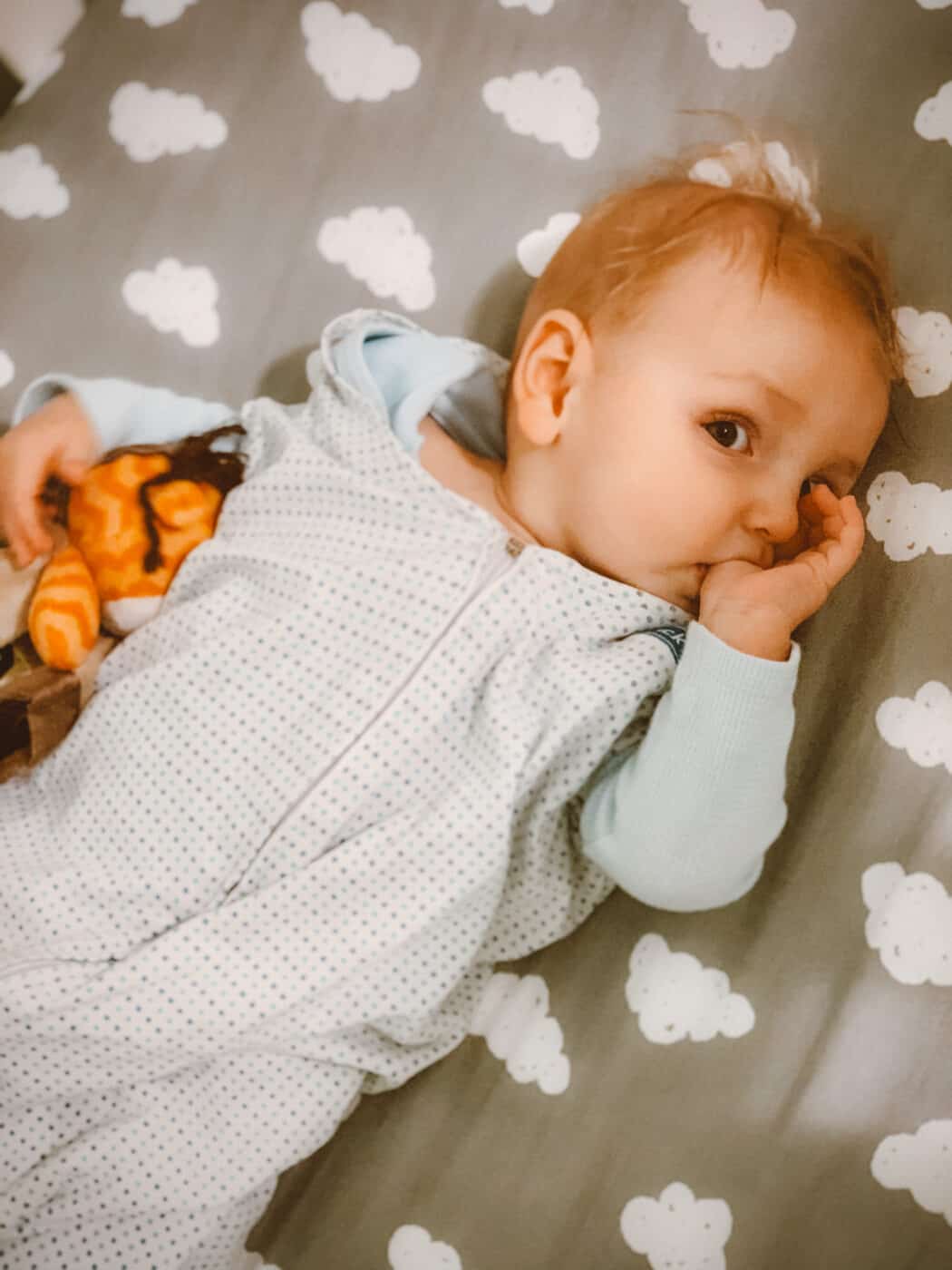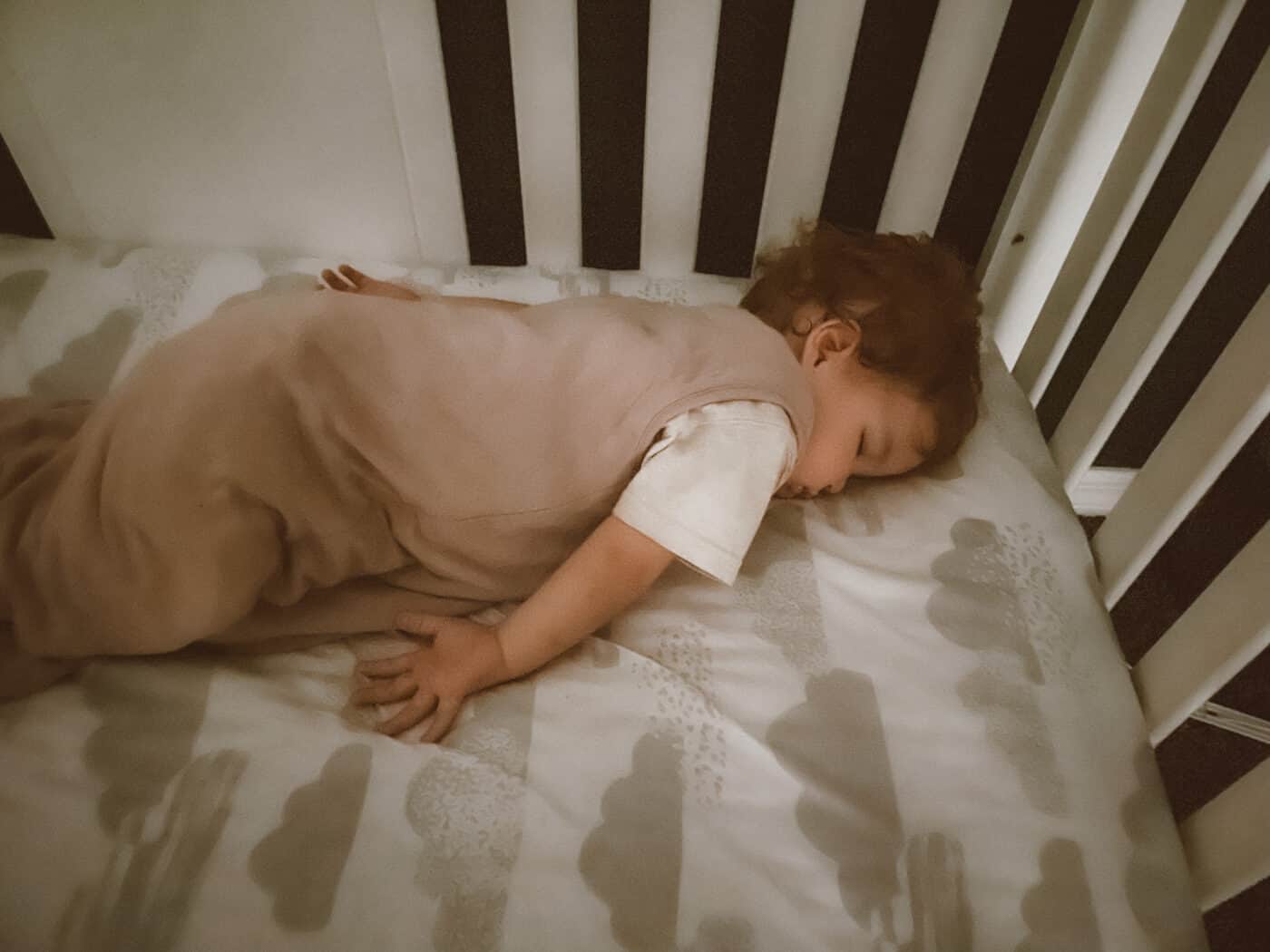Going Out to Dinner with Kids While on a Sleep Schedule
Why Sleep Sacks Are Our Favorite
After outgrowing the swaddle, families often ask us “What should my baby wear while sleeping?” We are happy to answer that question!
The truth is that your baby can sleep just fine in warm pajamas overnight. He can nap in daytime clothing without a problem. If that is your preference, go for it. Removing the swaddle on time is imperative for safety, but what you choose to use (or not) next is up to you!
At Sleep Wise Consulting, our preference is to use a sleep sack. We typically recommend using sleep sacks both for naps and overnight sleep for children in a crib.
What is a sleep sack?
A sleep sack is a wearable blanket that simply zips up over your baby. It doesn’t replace clothing or pajamas. Instead, it goes on top like a sleeping bag. It has openings for the arms and head, ensuring a baby has the freedom to move all limbs. A properly-fitted lightweight cotton sleep sack with no additional weight is key.
What are the benefits?
Warmth
You want your baby to be warm and cozy throughout sleep. We do too! A sleep sack helps regulates a baby’s body temperature without risking a loose item being added to the crib. Blankets cannot be used for little ones under 12 months old. Sleep sacks serve the purpose of an additional layer of warmth.
Further, infants and toddlers are very active sleepers. Thus, even for little ones over a year old, a blanket staying on young sleepers all night is very unlikely. That is because our little ones move constantly as they transition sleep cycles. A wearable blanket allows your little one to stay covered regardless of movement or position.

Comfort
While a swaddle in the first 8 weeks helps to reduce the Moro (startle) reflex, a sleep sack will provide your baby comfort without restricting motion as she grows. Similar to a lovey for toddlers, infants can find comfort in a sleep sack. They are soft and cozy. Further, they do not restrict little ones from sleeping in preferred positions.
Signal for Sleep
Putting the sleep sack on can also serve as a great signal to infants and toddlers alike that sleep is coming. Especially for our independent sleepers that do not rely on rocking, holding, milk, etc. to fall asleep, a consistent indicator that sleep is coming is helpful. During the nap time or bedtime routine, we recommend dressing your child for sleep using the changing table.
Safety
According to the AAP, using a blanket in an infant’s sleep space is not safe. Blankets cannot be introduced until a minimum of 12 months old. Naturally, safety is of utmost importance to our team. However, using a sleep sack does not jeopardize safety. A correctly-fitted sleep sack is safe for your little one long-term! Be sure the sizing matches your baby’s weight.
For your baby’s safety, do not use any weighted products. After the newborn weeks, avoid using any sleep sack that swaddles the torso even with the arms free. Being swaddle-free includes no restriction around the chest.
Some children feel most secure in a sleep sack for sleep times, while others may try to break free of it. Little ones should not be able to remove the sleep sack independently. If your toddler figures out how to unzip it, zip the sleep sack up backwards to keep it on safely. That way, he or she cannot reach the zipper to remove it without assistance.
Preventing Climbing
Many infants don’t express an opinion about sleepwear, but toddlers may. One of the very best deterrents we have found to prevent climbing out of the crib prematurely is the use of a sleep sack long-term.
Children should not be prohibited from crawling, cruising, or walking around the crib freely as needed. Sleep sacks allow them to roam and reposition. However, they are very effective in preventing kiddos from spreading their legs far enough apart to hike one over the sides. Keeping a toddler safely in a crib until an age-appropriate time to transition to a bed makes a world of difference for the entire household!
Which sleep sacks do you recommend?
Choosing the best sleep sack for your children may depend on the climate you live in and the temperature of your home. Many of our clients prefer HALO Sleep Sack, but there truly is no one brand that is necessary. Even lesser-known companies have great sleepwear products available!
How many do we need?

It’s best to have at least two sleep sacks on hand in your child’s size. When you need to wash one, it’s ideal to have a back-up for the next stretch of sleep. That way, your child has consistency to continue sleeping well. Of course, your little ones can sleep without it, but most infants and toddlers love predictable routines!
When should we drop it?
The choice of when to discontinue using a wearable blanket is up to you! When you invest in sleepwear, it’s nice to enjoy longevity of the product. As long as your child’s height and weight are within the constraints, use it as long as you’d like. Larger sleep sacks can even accommodate toddlers 30+ pounds and 40+ inches, so there is no rush to drop them.
Most children outgrow them between 2.5 and 3 years old. Many families move from sleep sacks in the crib to regular bedding in a big bed simultaneously.
How do we transition out of the sleep sack?
When it comes time to transition, we have a few tips to help. If your toddler is above age one in a crib, you can introduce a lightweight blanket or a small top sheet draped over your little one. This would begin while your kiddo is still in a sleep sack to introduce them to having blanket without risking a lack of warmth.
You can also choose a special blanket and help make it familiar for your little one. When you’re reading together, use it to help your toddler learn how to cover up. Expect your children to move lots throughout the night, so when the transition arrives, dress them in pajamas that will keep them warm even without a blanket.


